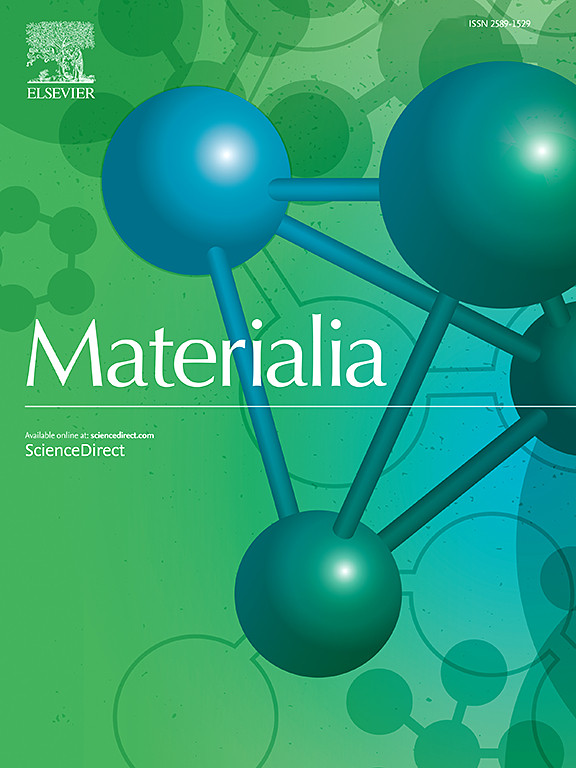Effect of pre-deformation and subsolvus heat treatment on microstructure and mechanical properties of a PM nickel superalloy
IF 2.9
Q2 MATERIALS SCIENCE, MULTIDISCIPLINARY
引用次数: 0
Abstract
In the present work, the effect of the super- and subsolvus solid solution heat treatment with intermediate pre-deformation (ε=6 and 12 %) at subsolvus temperature and final aging on the microstructure and mechanical properties of the Russian powder metallurgy (PM) nickel base superalloy EP741NP has been studied. The experiments were aimed at achieving serrated grain boundaries to improve the creep resistance and reduce crack growth rate. The as-HIPed material was forged at subsolvus temperatures followed by cutting the workpieces for subsequent processing. Three processing routes were applied: i) solid solution treatment at supersolvus temperature with slow cooling and at subsolvus temperature followed by air cooling and aging; ii) the same with 6 % pre-deformation before subsolvus solution treatment and iii) the same with 12 % pre-deformation before subsolvus solution treatment. As a result, three microstructural conditions were obtained. With increasing pre-deformation from 0 to 12 %, the degree of grain boundary serration and the dislocation substructure density increased. Tensile and impact tests showed that 6–12 % pre-deformation led to more ductile fracture and slightly higher ductility at 650 °C. The 6 % pre-deformation condition also exhibited higher creep resistance and impact strength, which was attributed to the positive effect of serrated grain boundaries and dislocation substructure.

预变形和亚溶热处理对PM镍高温合金组织和力学性能的影响
本文研究了亚溶温度下的超溶固溶热处理和亚溶固溶热处理对俄罗斯粉末冶金(PM)镍基高温合金EP741NP组织和力学性能的影响。实验的目的是使晶界呈锯齿状,以提高抗蠕变性能,降低裂纹扩展速度。该材料在亚溶温度下锻造,然后切割工件进行后续加工。采用三种工艺路线:1)在超溶剂温度下进行缓慢冷却的固溶处理和在亚溶剂温度下进行风冷时效处理;Ii)亚溶前预变形6%相同,iii)亚溶前预变形12%相同。得到了三种微观组织条件。随着预变形量从0 ~ 12%的增加,晶界锯齿化程度和位错亚结构密度增大。拉伸和冲击试验表明,在650°C时,6 - 12%的预变形导致了更多的韧性断裂和略高的塑性。6%预变形条件下,由于锯齿晶界和位错亚结构的积极作用,合金具有较高的抗蠕变性能和抗冲击强度。
本文章由计算机程序翻译,如有差异,请以英文原文为准。
求助全文
约1分钟内获得全文
求助全文
来源期刊

Materialia
MATERIALS SCIENCE, MULTIDISCIPLINARY-
CiteScore
6.40
自引率
2.90%
发文量
345
审稿时长
36 days
期刊介绍:
Materialia is a multidisciplinary journal of materials science and engineering that publishes original peer-reviewed research articles. Articles in Materialia advance the understanding of the relationship between processing, structure, property, and function of materials.
Materialia publishes full-length research articles, review articles, and letters (short communications). In addition to receiving direct submissions, Materialia also accepts transfers from Acta Materialia, Inc. partner journals. Materialia offers authors the choice to publish on an open access model (with author fee), or on a subscription model (with no author fee).
 求助内容:
求助内容: 应助结果提醒方式:
应助结果提醒方式:


